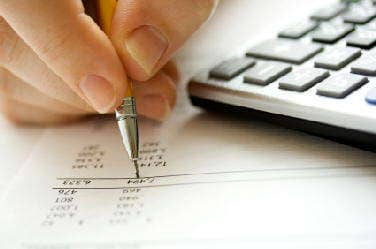Recent Articles
Popular Makes
Body Types
What Are Car Invoice Prices?

The car invoice prices, or dealer invoices, refers to the amount the dealer paid for a vehicle. Think of it as the wholesale amount that businesses pay before they offer the product to the general public at the retail price.
For a very long time, new car invoice prices were considered the Holy Grail in the car selling business and were closely guarded secret for the simple fact that if a retail buyer knew the auto invoice prices a dealer pays for vehicles, the dealer would lose his leverage to make a sizeable profit on the sale. With the advent of the Internet, the vehicle invoice prices secret has been cracked.
Both Edmunds.com and kbb.com freely post the MSRP and the new car invoice prices. Knowing the car invoice price lets a buyer make an offer he believes is fair for the car. Certainly the dealer cannot allow the buyer to pay vehicle invoice prices if he wishes to remain in business. The dealer needs to make a profit above new car invoice prices. Usually the buyer can make an offer somewhere in between the MSRP and the car invoice price. Usually a dealer will take the offer. Some websites even present actual purchase price recommendations, which should be the dealers’ godsend because it does the hard work for him. The sites tell a buyer what to pay above the invoice price and below the MSRP.
But then how can dealers advertise sales “below invoice price”?
Somewhere deep in the heart of the accounting manuals for car dealers and car manufacturers dwell some columns labeled “holdbacks” and “dealer allowances.” This accounting practice means that a dealer can receive vehicles at below car invoice prices and still make profits when vehicles sell at the vehicle invoice prices. These bits of financial legerdemain, or in other words, “financial trickery,” arrived just when buyers became aware of car invoice prices and the perceived injustice car dealers performed by gouging the buying public.
Somehow, everything seems a little too convenient. We have the MSRP creating the ceiling for vehicle prices. We have the vehicle invoice prices creating the floor, but all of a sudden those car invoice prices have no legitimacy because now we have “below invoice.” Just whom do we believe?
To the objective viewer, car invoice prices look like another marketing tool in the same category as the MSRP. The auto invoice prices set the range that makes a buyer buy. Who says that range reflects the actual worth of the vehicle? The dealer will be the last one to admit the actual car invoice price, but he will be the first to say he is going broke doing business with a savvy buyer who knew how to use vehicle invoice prices. The buyer believes the car invoice prices gave him power, but power has little bearing in this kind of deal.
Ultimately, maximizing profit is the car dealer’s goal, and no vehicle leaves his lot unless it has netted him some profit, despite what auto invoice prices say. If revealing the vehicle’s invoice price helps make a sale, then the dealer will be happy to share it. If a web site disseminates actual car invoice prices, those who use the website should look at those who advertise on the website.
The dealer’s car invoice prices arrived as weapons to slay the high prices and outrageous profits car dealers perpetrated on the public, but on closer inspection, car invoice prices may lack the punch it once had. If buyers can buy “below invoice,” then perhaps a price exists less than “below invoice.” Only the dealers will know for sure.